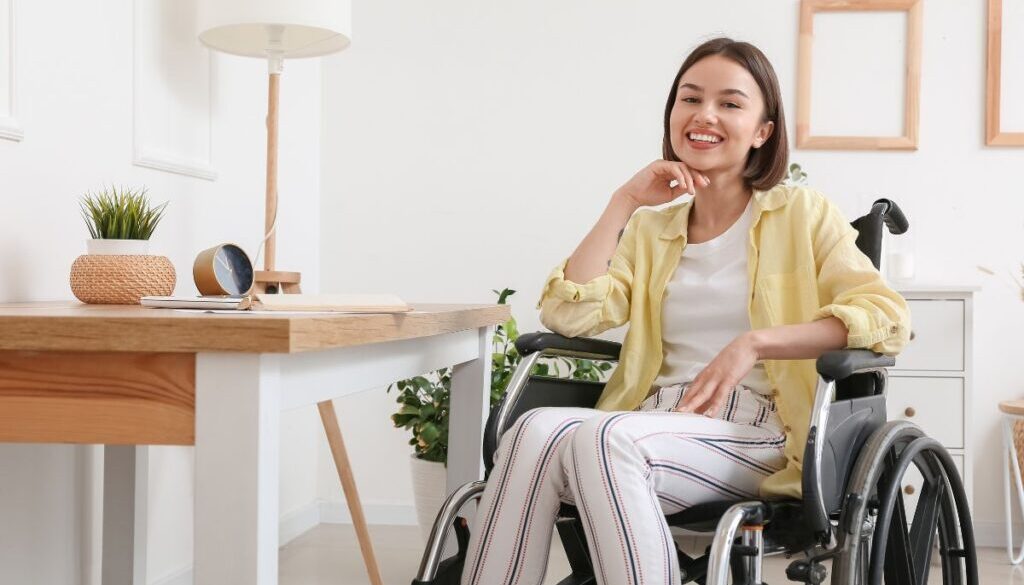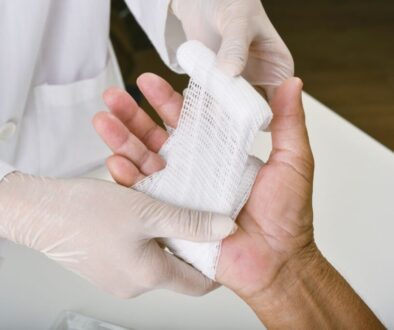Essential Home Modifications When Living With A Disabled Person
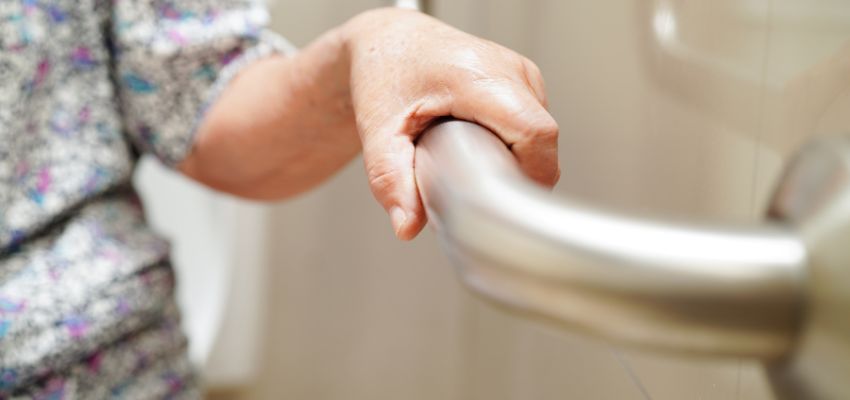
Install Grab Bars In Showers And Bathtubs
When it comes to bathroom modifications for disabled individuals, grab bars are essential for safety. They provide crucial support during bathing, a high-risk time for slips and falls. Installing these bars in showers and beside tubs can reduce accident risks. This helps individuals maintain their independence and confidence in daily routines.
Revamp Your Entryway And Install Ramps
Access to a home begins at the entryway, which often poses a challenge for individuals with mobility issues. Installing ramps can make entry more accessible for wheelchair users, and widening doorways also helps those with movement difficulties. These changes enhance accessibility, improve the home’s aesthetics, and ensure compliance with accessibility standards.
Install Slip-Resistant Flooring In Your Home
Integrating non-slip flooring options—such as cork, rubber, or low-pile carpet—is crucial for preventing slips and falls. These surfaces offer excellent stability, especially for individuals with balance issues or those using mobility aids. In addition to improving safety, non-slip flooring adds a stylish touch to any home.
Widen Doorways And Hallways
Widening doorways and hallways is a crucial modification for wheelchair users. It allows for more straightforward navigation in their homes, facilitates movement, creates a more inviting atmosphere, and encourages social interaction among family and guests.
Install A Walk-In Or Roll-In Bathtub
Walk-in and roll-in bathtubs are designed for easy entry and exit. They eliminate the need to balance on one leg, which can be challenging for those with mobility limitations. These tubs also have essential safety features like built-in seats and grab bars, making the bathing experience safer and more enjoyable.
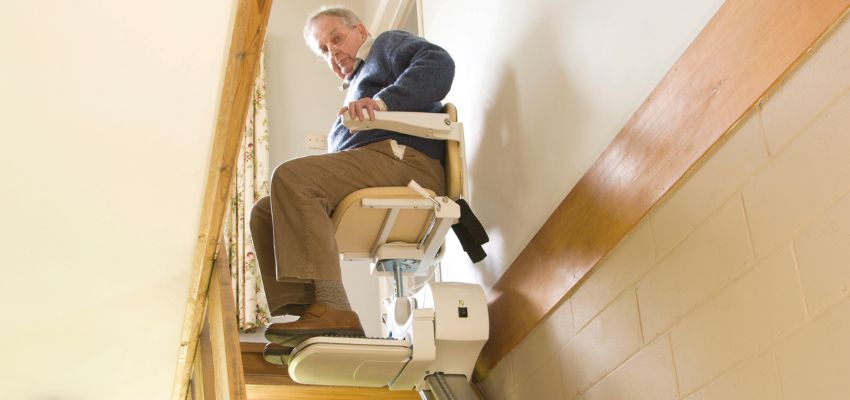
Install A Stair Lift For Multi-Story Homes
Stair lifts provide safe and convenient access for individuals with limited mobility to move between floors. These devices reduce the risk of falls, which can lead to severe injuries, and ease the strain on joints during transitions. Stair lifts come in various styles and can be customized to meet each user’s needs, ensuring a smooth fit into the home’s design.
Install Raised-Height Toilets In Bathrooms
Raised-height or comfort-height toilets provide added comfort and enhance safety for individuals with knee or back problems. Their design makes using the bathroom more accessible, promoting a more dignified experience, especially for those facing mobility challenges.
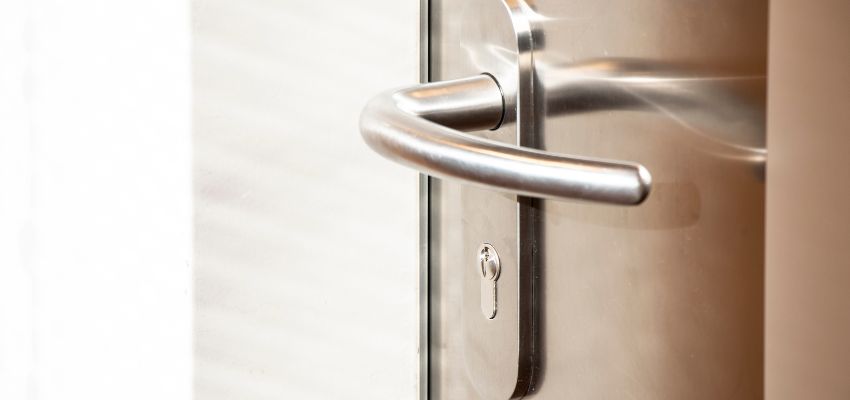
Swap Door Knobs For Handles
Switching from traditional door knobs to lever-style handles can improve accessibility. This change is beneficial for those with reduced hand strength or dexterity. Lever handles are easier to use, promoting independence and allowing for smoother movement around the home.
Eliminate Rugs And Mats
Loose rugs pose a significant safety hazard, raising the risk of trips and falls. Remove or secure them with non-slip tape to create a safer living space. Choosing flat, low-profile flooring can help minimize risks while still keeping a stylish look.
Adjust The Height Of Kitchen Counters
Adjusting kitchen counter heights improves accessibility for wheelchair users. Lower counters enable individuals to participate comfortably in food preparation and cooking, promoting inclusivity and independence in the kitchen.
Design Seamless Level Transitions Between Rooms
Incorporating level transitions between rooms eliminates tripping hazards. This allows for smoother and safer movement throughout the home. It’s especially beneficial for persons with mobility challenges. These transitions promote easier navigation and significantly reduce the risk of falls.
Create A Bright And Inviting Home Environment
Proper lighting is crucial for reducing the risk of accidents, especially for those with visual impairments. Bright and well-placed lighting enhances visibility and safety. It helps individuals navigate their homes with confidence. To improve accessibility at night, consider adding motion-sensor lights in critical areas.
Making essential changes to living environments can enhance the quality of life for individuals with disabilities and create spaces where everyone can thrive.
Grants For Disability Home Modifications
Grants for disability home modifications provide crucial financial support for improving accessibility at home. These grants cover essential changes like ramps, widened doorways, and grab bars. These modifications enhance safety and comfort, ultimately improving the quality of life for individuals and their families.
- U.S. Department of Veterans Affairs. This department offers grants to veterans with service-connected disabilities. These grants help modify their homes to fit their needs, covering various adjustments and ensuring veterans have a more accessible living space.
- The U.S. Department of Housing and Urban Development. This federal agency provides various funding opportunities for individuals needing home modifications. It focuses on projects that enhance living conditions and promote accessibility. To learn more about how you may qualify, visit the official department website.
- The Rural Housing Repair Loans and Grants Program. The United States Department of Agriculture offers the Single Family Housing Loans & Grants program. It’s designed for homeowners who live in their homes. This program helps those facing challenges in obtaining affordable credit from other sources. This grant is available to individuals who meet low-income requirements and are 62 or older.
- Rebuilding Together AmeriCorps. This organization offers home repair services across the country. They focus on improving safety and accessibility in homes for low-income families. Volunteers work to make necessary repairs and modifications for those who may not have the resources to do so themselves.
- Modest Needs Self-Sufficiency Grant. This organization offers the Self-Sufficiency Grant. It assists individuals living paycheck to paycheck, providing financial aid for necessary home modifications. The grant helps individuals secure safer living conditions and aims to make these conditions more accessible. Overall, the goal is to improve their well-being and financial stability.
- The Benevolent and Protective Order of Elks. This organization supports various local community services. It helps with home modifications for individuals in need. Their initiatives focus on improving the living conditions of those who may struggle financially.
- The National Resource Center on Supportive Housing and Home Modifications. This center offers many resources and educational materials for modifying their homes. It provides guidance on best practices and available funding sources, encouraging individuals to make informed decisions about their living spaces.
- The National Council of State Housing Agencies. This council provides resources for state-specific programs. These programs offer homeowner assistance through a dedicated fund.
Frequently Asked Questions About Home Modifications For Disability
Are home modifications for disability tax deductible?
Certain home modifications may qualify for tax deductions if deemed medically necessary. For specific advice, consult a tax professional.
What are accessibility modifications?
These modifications are changes made to a home. They aim to improve navigation and reduce risks for individuals with disabilities.
How do I ensure my room is ADA-compliant?
ADA compliance requires essential modifications, including accessible entryways and sufficient maneuvering space. The ADA guidelines provide comprehensive requirements.
How can I make buildings more accessible for individuals with disabilities?
Begin by focusing on essential areas like entryways and hallways, ensuring they are spacious and free of obstacles. Installing ramps and stair lifts is also crucial for accessibility.
What aids are available to assist individuals with disabilities?
Accessibility aids include standing supports, toilet safety rails, and non-slip mats, greatly enhancing safety and convenience.
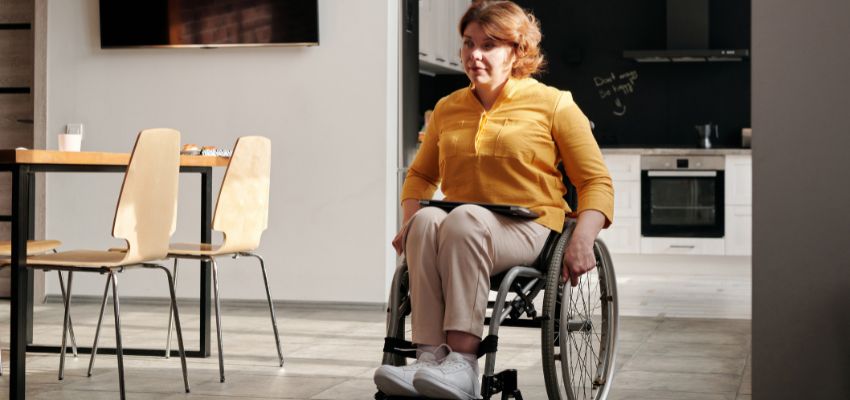
Empowering Lives With Thoughtful Home Modifications
Adapting your home for individuals with disabilities is crucial. It fosters independence and ensures safety and thoughtful modifications can make a big difference. Using available resources allows you to tailor a living space to meet specific needs, enhancing the overall quality of life. Let’s take proactive steps today with home modifications for disability to create more inclusive environments for those with disabilities!
Heal Ulcers, Burns, & Surgery Wounds With Break-Through Amniotic Allograft Treatments
Experience the future of wound care with our advanced amniotic allograft treatments. Say goodbye to slow healing. Our innovative solutions promote faster recovery from pressure wounds, ulcers, burns, and surgical wounds. Trust the power of science for your healing journey. Regain your comfort and health today! See if you are eligible for treatment here.

About The Author
Corinne Grace is a full-time writer living in the Philippines. She has a nursing degree from Riverside College. Her background in nursing informs her perspective, allowing her to weave in themes of health, empathy, and resilience into her work.
